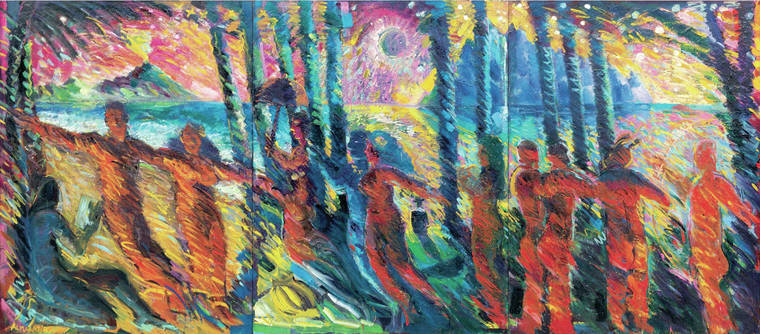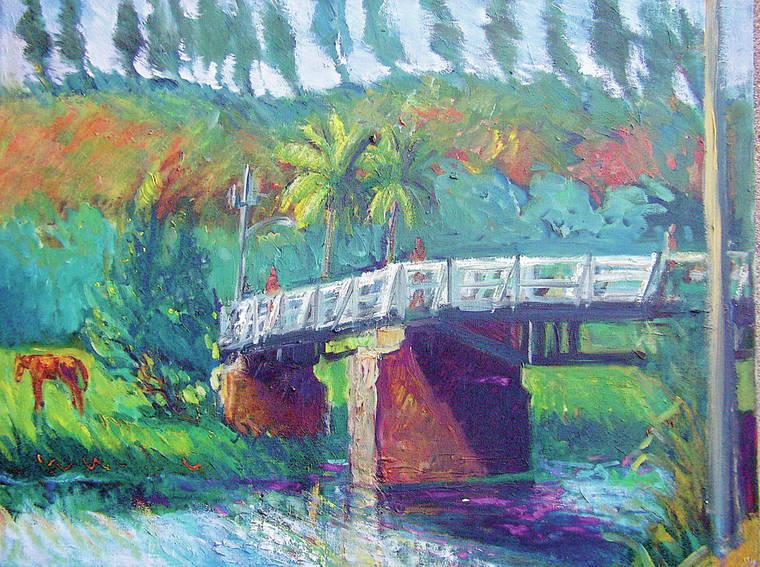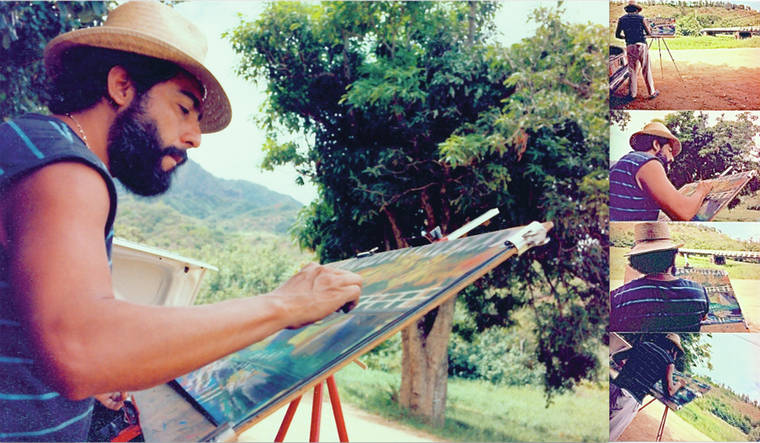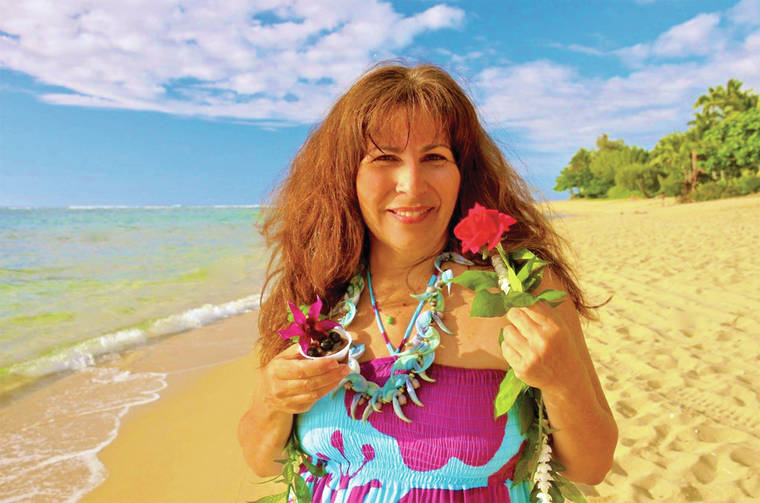Wainiha resident, painter, photographer and public artist Elsa Flores Almaraz has used her skills as a videographer and photographer to document the events of her community from the 2018 floods to the recent cult controversy by sharing them with local news outlets and on social media. Although she has garnered tens of thousands of views on various platforms, she is about to get a much wider international audience and a global platform.
Flores Almaraz is the co-writer and co-director of “Carlos Almaraz: Playing with Fire,” an award-winning documentary to premiere on Netflix on today that examines the life and work of her late husband, groundbreaking Los Angeles artist Carlos Almaraz.
The couple were a fixture on the Kaua‘i art scene in the early 1980s when they bought a small plantation-style home on the North Shore in 1983 and spent much of their time on Kaua‘i. Almaraz painted dozens of lush images of Kaua‘i’s waterfalls, mountains and beaches in the bold colorful style that made his paintings highly sought after by collectors from Bruce Springsteen and Jack Nicholson to international museums.
“Carlos loved Kaua‘i and his time here revitalized him. Always a student, he learned the history and culture of the Hawaiian islands and its people from varying perspectives — from the depiction in popular films to scholarly articles on Hawaiian mythology,” explains Flores Almaraz. Drawing inspiration from what he experienced and read, he’d return to his L.A. studio and produce large-scale paintings inspired by Hawaiian mythology and cosmology, like ‘Early Hawaiians.’” He also painted many treasured landscapes in the plein air style, which Flores Almaraz has kept in her personal collection.
The documentary follows Almaraz’s prolific and intense creative output and growing success as an artist after years of struggle. His relationship and marriage to Flores Almaraz marked a turning point in his life as work success coincided with personal happiness and fulfillment as a husband and father. However, a few years later he was diagnosed with AIDS, to which he succumbed in 1989. His final resting place is St. Catherine’s Cemetery in Kapa‘a, alongside Maria Valenzuela Flores, his mother-in-law.
“As a creative force, Carlos bridged a multitude of worlds as his identity shape-shifted through the cultural and political movements of the 1960s and onward. As his wife and artistic partner, I have worked for years to tell his story and maintain his legacy, and this film is an intimate look at the man behind the iconic paintings,” explains Flores Almaraz.
Indeed, the film is the culmination of a more than a decade-long passion project for Flores Almaraz, who with her daughter, Maya Almaraz, a postdoctoral environmental research scientist at the University of California, Davis, divided their time between Kaua‘i and Los Angeles after Carlos’ death. “Kaua‘i was a haven and an inspiration for us as artists and as a family,” says Flores Almaraz. Both she and Almaraz exhibited regularly at Stones’ Gallery in Lihu‘e, until Hurricane Iniki blew it away and in exhibitions in at the Honolulu Museum of Art (formerly The Contemporary Museum of Honolulu).
The documentary traces the arc of Almaraz’s life as a child of Mexican immigrants who came to the United States in pursuit of the American Dream. “Charles” D. Almaraz — as he was then known — fully embraced American pop culture of the 1950s which shaped an enduring artistic sensibility and iconography as he became a seminal figure in the L.A. art scene.
Using archival footage, interviews and extensive personal journals and diaries, “Playing with Fire” surveys the artist’s personal and creative struggles and his political and artistic evolution during his years in the New York art scene of the 1960s to his rise as a beloved leader of the Chicano Art Movement of the 1970s. The Kaua‘i section highlights the family’s island life — with lots of landmarks and places that will be familiar to Kaua‘i viewers.
“Carlos Almaraz: Playing with Fire” will premiere on Netflix in the United States during National Hispanic Heritage Month, as well as in Spain and every country in Latin America; global release will follow shortly thereafter. The film is rated TV-14. The documentary won “Best in Fest” at the 2019 Palm Springs International Film Festival and was an official selection of the Sedona, Newport Beach and Cine Las Americas International Film Festivals.





